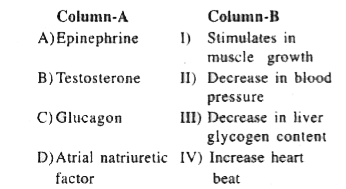Which is (are) correct among the following ? .
The radius of CIΘ ion is 1.56Å while that of Na⊕ ion is 0.95Å .
The radius of CI atom is 0.99 while that of Na atom is 1.54
The radius of CI atom is 0.99 while that of CIΘ ion is 0.81
The radius of Na atom is 0.95 while that of Na⊕ ion is 1.54 .
The correct Answer is:A, B
To determine which statements are correct regarding the ionic radii of Cl⁻ and Na⁺, we will analyze the properties of these ions based on their atomic structure and periodic trends.
1. Identify the Parent Atoms:
- Sodium (Na) is in Group 1 (alkali metals) and has a parent atom of Na.
- Chlorine (Cl) is in Group 17 (halogens) and has a parent atom of Cl.
2. Understand the Ionic Forms:
- Sodium forms a cation (Na⁺) by losing one electron.
- Chlorine forms an anion (Cl⁻) by gaining one electron.
3. Analyze the Size of Ions:
- Cations: The size of cations is always smaller than their parent atoms because the loss of an electron leads to a higher effective nuclear charge (more protons than electrons), pulling the remaining electrons closer to the nucleus. Thus, Na⁺ will be smaller than Na.
- Anions: The size of anions is always larger than their parent atoms because the gain of an electron results in increased electron-electron repulsion and a lower effective nuclear charge (more electrons than protons). Thus, Cl⁻ will be larger than Cl.
4. Compare the Sizes of Na⁺ and Cl⁻:
- Since Na⁺ is smaller than Na and Cl⁻ is larger than Cl, we can compare the sizes of Na⁺ and Cl⁻ directly.
- Generally, within the same period, the size of cations decreases and the size of anions increases. Therefore, Na⁺ (a cation) will be smaller than Cl⁻ (an anion).
5. Check the Given Options:
- Option 1: Radius of Cl⁻ > Radius of Na⁺ (Correct)
- Option 2: Radius of Cl > Radius of Na (Incorrect, as Cl is larger than Na)
- Option 3: Radius of Cl⁻ > Radius of Cl (Incorrect, as Cl⁻ is larger than Cl)
- Option 4: Radius of Na > Radius of Na⁺ (Incorrect, as Na⁺ is smaller than Na)
6. Conclusion:
- The only correct statement is that the radius of Cl⁻ is greater than that of Na⁺.
Summary of Correctness:
- The correct statement is that the radius of Cl⁻ is greater than the radius of Na⁺.
- Sodium (Na) is in Group 1 (alkali metals) and has a parent atom of Na.
- Chlorine (Cl) is in Group 17 (halogens) and has a parent atom of Cl.
- Sodium forms a cation (Na⁺) by losing one electron.
- Chlorine forms an anion (Cl⁻) by gaining one electron.
- Cations: The size of cations is always smaller than their parent atoms because the loss of an electron leads to a higher effective nuclear charge (more protons than electrons), pulling the remaining electrons closer to the nucleus. Thus, Na⁺ will be smaller than Na.
- Anions: The size of anions is always larger than their parent atoms because the gain of an electron results in increased electron-electron repulsion and a lower effective nuclear charge (more electrons than protons). Thus, Cl⁻ will be larger than Cl.
- Since Na⁺ is smaller than Na and Cl⁻ is larger than Cl, we can compare the sizes of Na⁺ and Cl⁻ directly.
- Generally, within the same period, the size of cations decreases and the size of anions increases. Therefore, Na⁺ (a cation) will be smaller than Cl⁻ (an anion).
- Option 1: Radius of Cl⁻ > Radius of Na⁺ (Correct)
- Option 2: Radius of Cl > Radius of Na (Incorrect, as Cl is larger than Na)
- Option 3: Radius of Cl⁻ > Radius of Cl (Incorrect, as Cl⁻ is larger than Cl)
- Option 4: Radius of Na > Radius of Na⁺ (Incorrect, as Na⁺ is smaller than Na)
- The only correct statement is that the radius of Cl⁻ is greater than that of Na⁺.
- The correct statement is that the radius of Cl⁻ is greater than the radius of Na⁺.
Topper's Solved these Questions
- CHEMICAL BONDING AND MOLECULAR STRUCTUREBOOK - CENGAGE CHEMISTRY ENGLISHCHAPTER - CHEMICAL BONDING AND MOLECULAR STRUCTUREEXERCISE - Exercises Multiple Correct (Dipole Moment)
3 Videos
- CHEMICAL BONDING AND MOLECULAR STRUCTUREBOOK - CENGAGE CHEMISTRY ENGLISHCHAPTER - CHEMICAL BONDING AND MOLECULAR STRUCTUREEXERCISE - Exercises Multiple Correct(Hybridisation)
12 Videos
- CHEMICAL BONDING AND MOLECULAR STRUCTUREBOOK - CENGAGE CHEMISTRY ENGLISHCHAPTER - CHEMICAL BONDING AND MOLECULAR STRUCTUREEXERCISE - Exercises Linked Comprehension
43 Videos
- ATOMIC STRUCTUREBOOK - CENGAGE CHEMISTRY ENGLISHCHAPTER - ATOMIC STRUCTUREEXERCISE - Concept Applicationexercise(4.3)
19 Videos
- CHEMICAL EQUILIBRIUMBOOK - CENGAGE CHEMISTRY ENGLISHCHAPTER - CHEMICAL EQUILIBRIUMEXERCISE - Subjective type
1 Videos
Similar Questions
Knowledge Check
Choose the correct among the following statements :
A B
B C
C D
D
The correct option among the following is
View SolutionThe correct option among the following is:
View SolutionThe correct option among the following is:
View SolutionChoose the correct option among the following

View SolutionPredict the correct order among the following:
View SolutionWhich are prisms among the following?
View SolutionThe correct statement among the following is
View Solution
